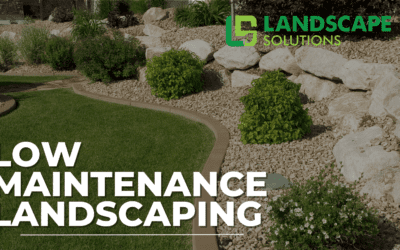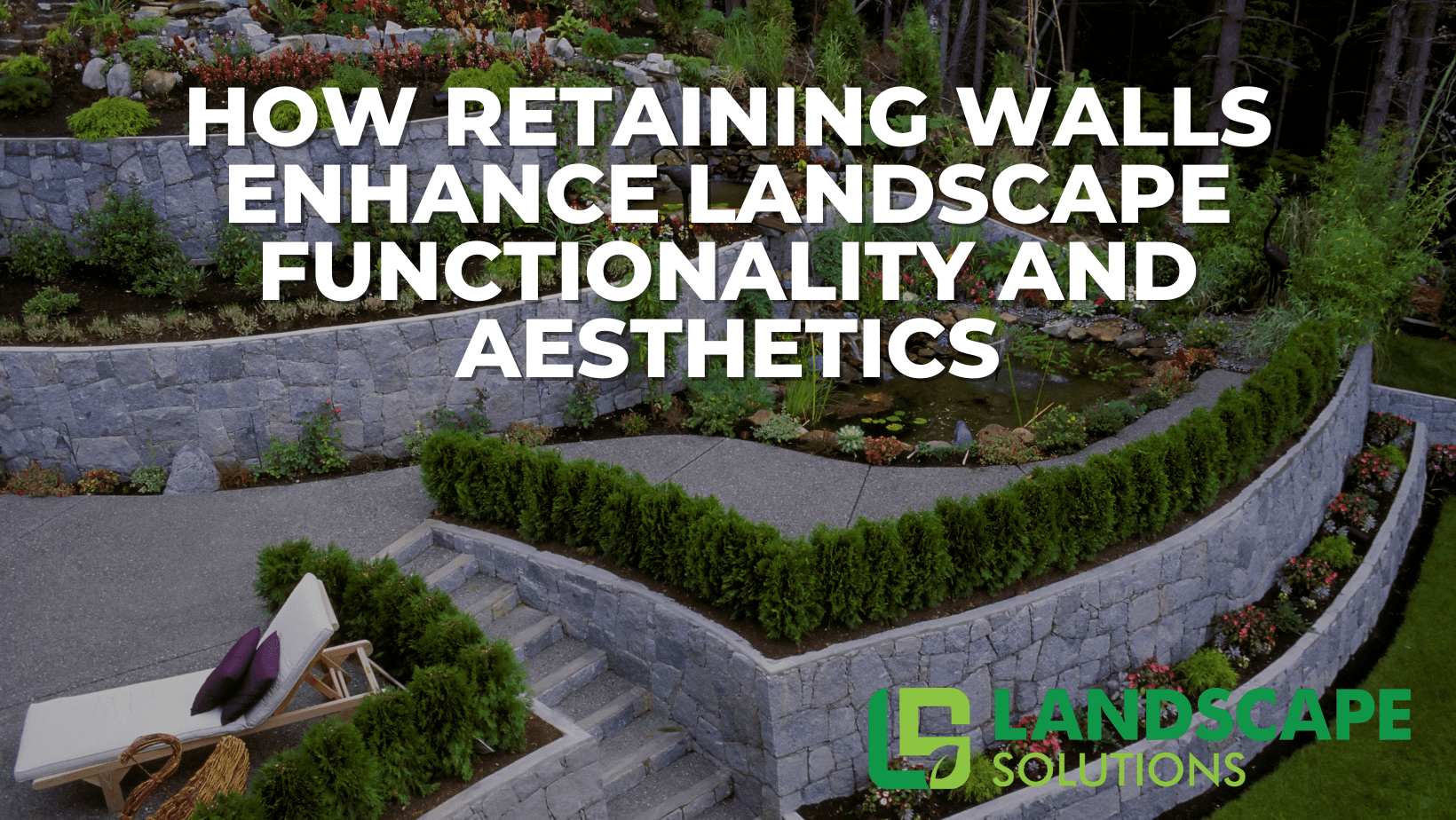Retaining walls serve as a bridge between a property’s natural topography and a homeowner’s desire for organization, usability, and beauty. Far from being merely utilitarian structures, retaining walls can dramatically enhance both the functionality and aesthetics of an outdoor space. By managing slopes, improving drainage, and providing a canvas for creative design, these features add lasting value and curb appeal to any landscape.
Balancing Form and Function
Sloped properties present unique challenges for homeowners who wish to make the most of their outdoor spaces. Without proper stabilization, soil erosion can become a persistent problem. Water may flow unchecked, washing away nutrients and causing damage to garden beds, lawns, and hardscapes. Retaining walls address these issues by providing a stable barrier that holds soil in place, preventing erosion and keeping slopes under control.
Yet the value of a retaining wall goes beyond stabilizing the land. By carving out level areas in an otherwise uneven terrain, these structures create entirely new spaces for planting, seating, or play. This transformation can turn a hilly, hard-to-use yard into a series of terraces, each with its own purpose—be it a vegetable garden, a seating nook for outdoor entertaining, or a cozy lawn area for children and pets.
Materials for Every Style
Choosing the right material for a retaining wall influences both its performance and visual appeal. Popular options include:
- Natural Stone: Stone walls lend a timeless charm, merging seamlessly with the natural environment. They often feature irregular shapes and colors, resulting in a look that feels organic and sophisticated. Stone also offers durability, ensuring that the wall stands the test of time.
- Concrete: Concrete walls, whether poured or built using modular blocks, can be shaped and textured in various ways. Some designs mimic stone or brick, while others embrace a clean, modern aesthetic. Concrete’s strength and versatility make it a top choice for contemporary landscapes or for projects requiring substantial structural support.
- Timber: Wooden retaining walls provide a warm, rustic feel. While not as long-lasting as stone or concrete, treated timber can still endure for many years with proper care. Timber walls are often used for low-height terraces or as a cost-effective solution when building multiple retaining levels.
- Brick and Other Masonry: Brick walls bridge the gap between traditional and modern landscapes, depending on the style of the brick and mortar. This option can complement homes with brick exteriors or highlight certain architectural details.
By selecting materials that complement the home’s architectural style and the surrounding environment, retaining walls can become an integral part of the overall design narrative.
Controlling Erosion and Improving Drainage
One of the core benefits of a retaining wall is its role in erosion control. When built correctly, these walls hold back soil on one side, preventing it from washing downhill and filling low-lying areas with sediment. This not only protects delicate plantings and hardscapes but also maintains the structural integrity of paths, patios, and driveways.
Drainage is another critical consideration. Properly engineered retaining walls often include drainage systems behind them, such as gravel backfill, perforated pipes, or weep holes. These elements help channel water away from the wall and prevent hydrostatic pressure from building up. As a result, moisture levels in the soil remain balanced, promoting healthier plant growth and reducing the risk of wall damage over time.
Integrating Gardens and Greenery
Retaining walls can also serve as a backdrop to vibrant plantings. By tiering the landscape, these structures create multiple levels of planting beds where flowers, shrubs, and ornamental grasses can thrive. This adds depth and dimension to the yard, guiding the eye upward through layers of color and texture.
For a low-maintenance and sustainable approach, selecting drought-tolerant or native plants can reduce watering needs and attract pollinators. For instance, placing flowering perennials along a terrace can yield a dynamic, ever-changing display from spring through fall. Ornamental trees and shrubs can provide year-round interest, while ground covers can help stabilize soil and soften the transition between the wall and the greenery.
Seating Areas, Water Features, and More
Beyond plantings, retaining walls can be tailored to incorporate functional amenities. Consider the following ideas:
- Built-in Seating: A retaining wall can double as a bench. By adjusting the height and adding a smooth capstone, homeowners gain extra seating around a fire pit or outdoor dining area.
- Water Features: Cascading waterfalls or small ponds can be integrated into a terraced slope. The wall provides a structural backdrop that frames these water elements, creating a calming focal point and attracting birds and beneficial insects.
- Outdoor Kitchens and Patios: By leveling out part of a slope, a retaining wall can create space for a patio or outdoor kitchen. This expands the home’s living area into the yard, making outdoor entertaining more accessible and enjoyable.
By thinking of a retaining wall as a design element rather than a barrier, it is possible to elevate the entire landscape. The structure becomes a canvas for creativity, encouraging an interplay between nature, architecture, and lifestyle.
Maintenance Tips for Longevity
While retaining walls are designed for stability and durability, proper care ensures they remain functional and attractive for many years:
- Regular Inspections: Check for signs of soil movement, cracks, or loose stones. Early detection of minor issues can prevent larger problems down the line.
- Weed and Root Control: Remove weeds or invasive roots that may grow between stones or blocks. Over time, vegetation can compromise structural integrity.
- Proper Drainage Maintenance: Keep drainage channels clear. Clear out leaves and debris to ensure that water flows freely through perforated pipes or weep holes.
- Periodic Cleaning: Remove dirt, moss, or stains to maintain a fresh appearance. Gentle pressure washing or brushing can help preserve the wall’s aesthetic.
With minimal maintenance and attention, a well-built retaining wall can provide decades of stability, function, and style.
Enhancing Property Value and Enjoyment
A well-designed retaining wall does more than solve practical problems; it can significantly enhance a property’s value and the homeowner’s enjoyment of the outdoor space. The combination of erosion control, usable terraces, and visually appealing materials can transform a once-challenging landscape into a cohesive, inviting environment.
From formal gardens with masonry walls to rustic terraces adorned with natural stone, each retaining wall installation tells a story of the homeowner’s personal taste and the local environment’s character. By choosing materials, plants, and features that resonate with the property’s natural beauty, these structures become cornerstones of a truly dynamic and engaging outdoor setting.
Call to Action
For expert guidance on designing and installing durable, stylish retaining walls tailored to your property’s unique needs, turn to Landscape Solutions. With a commitment to quality, sustainability, and craftsmanship, the team can help transform your landscape into a functional, visually appealing space. Call (615) 852-5009 or visit www.landscapetn.com to schedule a consultation and start building the perfect retaining wall for your home.




